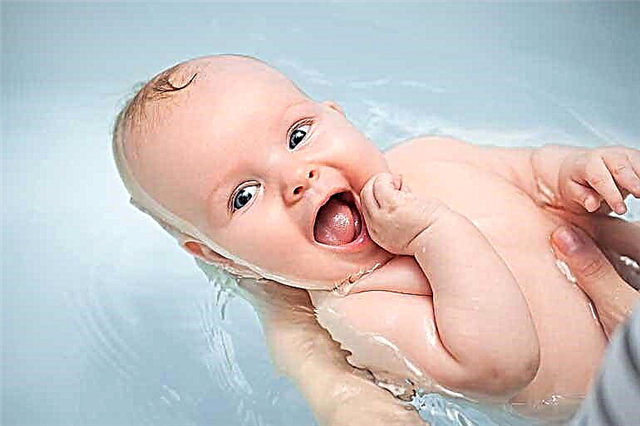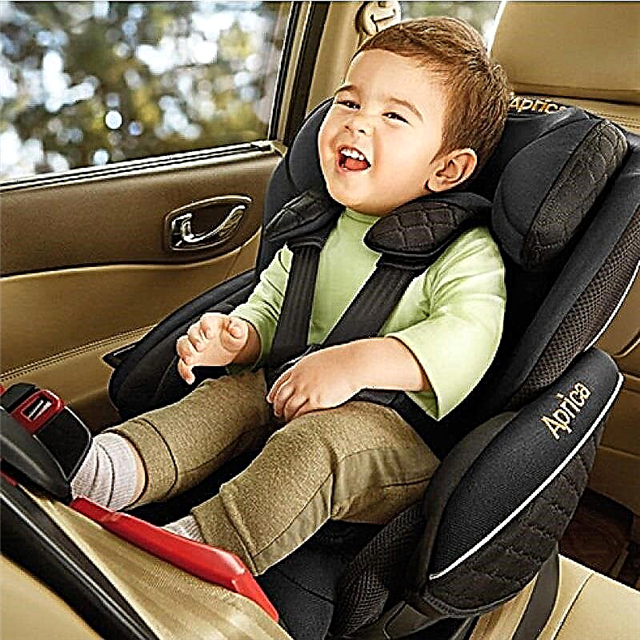A runny nose in a child brings a lot of inconvenience to the baby and causes concern to parents. The kid is capricious, refuses to eat and cannot fully breathe. There are ways to help rid your child of accumulated mucus. The task of parents is to study the proposed options and choose the most optimal one for each case.

Runny nose in a baby
Danger of a clogged nose in an infant
When a baby's nose is not breathing, care must be taken to alleviate the condition. Depending on the type of rhinitis, treatment is selected.
Note! Difficulty breathing leads to inadequate oxygen supply. This affects the well-being of the child and can affect his development. Babies refuse to eat, lose weight, which is very dangerous for babies.
Prolonged runny nose can lead to the development of serious diseases:
- Otitis. Finding it is not always easy at the initial stage. The child screams heart-rendingly, touches his ear. If you press the tragus, the crying will intensify. This condition requires immediate medical attention;
- Adenoiditis. The tonsils located in the nasopharynx become inflamed and enlarged. This provokes chronic runny nose and breathing problems;
- Tracheitis, often turning into bronchitis. The inflammation subsides, and a cough begins. It is paroxysmal in nature. Skilled help is needed to rule out pneumonia. In children of the first year of life, diseases develop rapidly.
You should not self-medicate, you need to see a doctor if the runny nose lasts more than 7 days. This will help avoid dangerous consequences and lingering illnesses. After the examination, the pediatrician will prescribe the correct treatment or advise you to continue what you started if he does not notice the pathology.

At the doctor
Causes of mucus in the nose
Mucus in the nose is the body's response to a viral infection. It protects against its spread throughout the body. The mucus contains substances that destroy viruses. Their action weakens when the discharge becomes thick. It is important to prevent this by creating a comfortable environment and performing nasal hygiene.
Types of a cold in infants
Treatment of a common cold is determined by its type. In some cases, only help is required, ensuring comfortable humidity and temperature. It is imperative to get rid of mucus, the child's nose must breathe.
Fluid profuse discharge
A thin, clear nasal discharge often appears immediately after the baby is born. This is a physiological rhinitis, which is considered a reaction to new conditions. The baby adapts to changes, getting used to the world around him. You do not need to treat such a cold, it will go away on its own. This usually happens after a month, in some children faster, in others longer.
If profuse discharge appears after nasal congestion, this is the second stage of the disease. Most likely, a runny nose is a manifestation of a viral infection. It is necessary to maintain comfortable conditions and water the baby a lot so that the discharge does not become thick and stringy.
Usually, to stop such a runny nose, it is enough:
- Do a wet cleaning of the house, remove soft toys and carpets that accumulate dust;
- Turn on the humidifier, if this is not possible, place dishes in the room or hang wet sheets;
- Ventilate frequently so that the air does not stagnate. This is especially true in the warm season. In winter, the air is already dry enough, so it will not bring significant relief.
Thick discharge
Thick mucus - the addition of a bacterial infection. Another factor indicating the spread of pathogens is discoloration of the discharge. They turn greenish or yellow-green. As a result, the child develops sinusitis or rhinitis.
Crusts
In the absence of nasal hygiene and dry indoor air, crusts form. They also appear when the temperature rises in the crumbs. They need to be sucked off to make breathing easier. For the smallest, cotton tubes are used. They are made specifically for babies and do not penetrate deep into the nasal passage, so as not to damage the mucous membrane.
Ways to suck out snot from a baby
During a runny nose, you need to restore nasal breathing, relieving the child of snot. Babies do not know how to blow their nose, this becomes the task of the parents. There are several ways how to suck out snot from a baby, everyone chooses the most convenient option.
Electronic aspirator
The electronic aspirator automatically cleans the baby's nose. It is very easy and safe to use it, the main thing is to set up the baby. You just need to insert a silicone nozzle into the nostril and turn on the device. The mucus enters a transparent container, so the progress of the procedure is immediately visible.
Note! The device easily removes liquid snot, but it is beyond its power to get thick discharge that is far away.

Electronic aspirator
Vacuum aspirator
The vacuum aspirator is considered the most efficient. It is a vacuum cleaner attachment. It is thanks to his traction that the baby's snot is easy to pump out. Even thick discharge from all parts of the nasal cavity gets into the reservoir of the device. A vacuum aspirator in a few seconds solves the issue of congestion, allowing the baby to breathe again.
Rubber pear
A pear, or a manual aspirator, is not a very convenient tool. It will allow you to suck out snot from a baby that are nearby, and will only get rid of superficial mucus. Due to the fact that it is opaque, it is not clear whether the process has a result. In any case, you will need to carry out the procedure several times.
Syringe
When suctioning with a syringe, you need to place the tip into the nostril, be sure to remove the needle, and pull towards yourself, collecting mucus. This will remove nearby liquid secretions. In addition, you need to be careful not to damage the baby's mucous membrane, because the tip of the syringes is hard and with a sharp movement can lead to injury.
A tube
A mechanical aspirator is a tube attachment and a mouthpiece. Parents need him to suck snot. It is necessary to take sharp breaths, drawing in air, so that the mucus comes out of the nose. There is a filter between the nozzle and the tube. It prevents snot from penetrating further towards the mouthpiece.
Note! Suction in this way does not exclude the risk of infection from the baby during the procedure. This is the main disadvantage of a mechanical aspirator.
The mechanical aspirator makes it possible to regulate the force of inhalation, protecting the delicate mucous membrane of the baby.
A snot sucker is an indispensable item for parents of newborns. Thanks to him, the child breathes, and the runny nose passes faster. This is a good alternative to blowing it out until the baby can do it on its own.

Aspirator
How to suck snot from a baby
It is not necessary to suck out the snot without the need. It is recommended to do this when breathing is difficult for an infant and needs to be relieved. Usually, during the procedure, children resist, break free, start crying, which further leads to swelling of the mucous membrane and the formation of secretions.
Training
Before removing snot from a newborn baby, you need to soften the discharge:
- Drop in saline or saline solution. In the first case, 1-2 drops are enough in each nostril. Saline is recommended to use a larger amount, at least half of the pipette. In this case, it is important to tilt the baby's head so that the nostril into which they are dripping is at the top. This technique will exclude the development of otitis media, because babies, especially newborns, have everything close by. For the same reason, sprays cannot be used, they are contraindicated in children under three years old. The nasal passages are quite short, which is why babies get sick more often than adults;
- Wait 5-10 minutes for the solution to work and start the procedure.
Saline solutions will not only help soften discharge, but also partially relieve inflammation, making breathing easier. When excess mucus has been removed, you can only rinse your nose. The saline will make the remaining snot run out and run down the back of your baby's throat. A similar procedure can be done at least every half hour. It is recommended to remove secretions with an aspirator no more than 2-3 times a day.
Basic Rules
Before blowing out snot from a baby, you need to try to calm him down. Otherwise, he will break free, and there is a risk of injury to him. If the baby continues to resist, then you need to hold his head tighter so as not to scratch the mucous with the tip or hit it. After each pumping out of mucus, any device must be thoroughly washed with running water.
Using the tube
A mechanical aspirator is the most affordable and fairly convenient way to get rid of a cold. There is one drawback - you usually need to change filters, which quickly become unusable. Some people have got used to using cotton balls instead, they also prevent mucus from entering the tube.
How to suck a child's snot with a tube:
- The baby should be placed or placed upright if possible. This is a natural posture when snot flows out of the nose on its own;
- The mouthpiece should be in the mouth of the person who will carry out the procedure;
- Insert the tube into one nostril, squeeze the other slightly, draw in air. You do not need to do this with all your might, otherwise there is a possibility that the blood vessels will burst and reddish clots will appear. You need to inhale sharply, slightly pulling the tube towards you, this will reduce the pressure and discomfort of the crumbs;
- After the first nostril, replace the filter, rinse the tip and repeat the procedure.

Using the tube
Aspirator application
It is advisable to suck out snot from a calm child, preparing him for the procedure. For parents, it will not seem difficult, the main thing is to remember a few rules.
How to pump out snot from a baby using an aspirator:
- The tip should be in a level position. You do not need to insert it deep into the nostril;
- Turn on the device or vacuum cleaner;
- It is imperative to ensure that the nozzle does not stick to the wall of the nasal passage in order to avoid injury to the mucous membrane;
- Pinch the second nostril with your finger;
- Then thoroughly wash the device, preparing for the next use.
Note! If the baby is afraid and crying, it is worth postponing the procedure. You need to maintain a positive attitude and be confident in the correctness of your own actions. The child reads the emotions of the family and begins to worry if the parents hesitate and play for time.
How to pump out snot with a pear
A rubber bulb is the easiest way to pump out snot. But it will not allow you to remove thick discharge, you need to use it several times in a row in order to achieve a result and alleviate the baby's condition. The main thing when using it is not to put the tip deep into the nostril.
How to remove snot from a newborn:
- The pear is squeezed in the hand so that air comes out of it;
- The tip is inserted into the child's nostril;
- The hand is removed. Together with the air, mucus is sucked into the syringe.
How to properly pull out snot
To pump out snot, you need to soften them in advance with saline solutions. Do not use medicated drops without a doctor's recommendation. This is especially true for vasoconstrictors, which can harm the crumbs with excessive use. A pediatrician should be consulted if the runny nose lasts more than a week. He will prescribe treatment or refer you to a narrow specialist - ENT.
Clots and crusts
Saline solutions will relieve swelling and soften clots and crusts. You can twist turundochki out of cotton wool, moisten them in a saving liquid and place them a few millimeters into the baby's nostril: first into one, then into the other.

Cotton wool flagella
This will also make the snot runny and the crusts soft. After that, they can be easily pulled out with an aspirator or a pear. To prevent their appearance, you need to monitor the humidity of the air and constantly offer the baby water.
Note! Sucking out snot according to all the rules 2-3 times a day will prevent new crusts from forming.
Every child faces a runny nose. This is not surprising - the nasal passages are narrow and short. Babies react quickly to dryness in the room, dusty and gassed air, and are also susceptible to viruses. To help the baby, you need to teach him how to blow his nose as early as possible. Before that, independently remove the snot using a convenient method for this.



